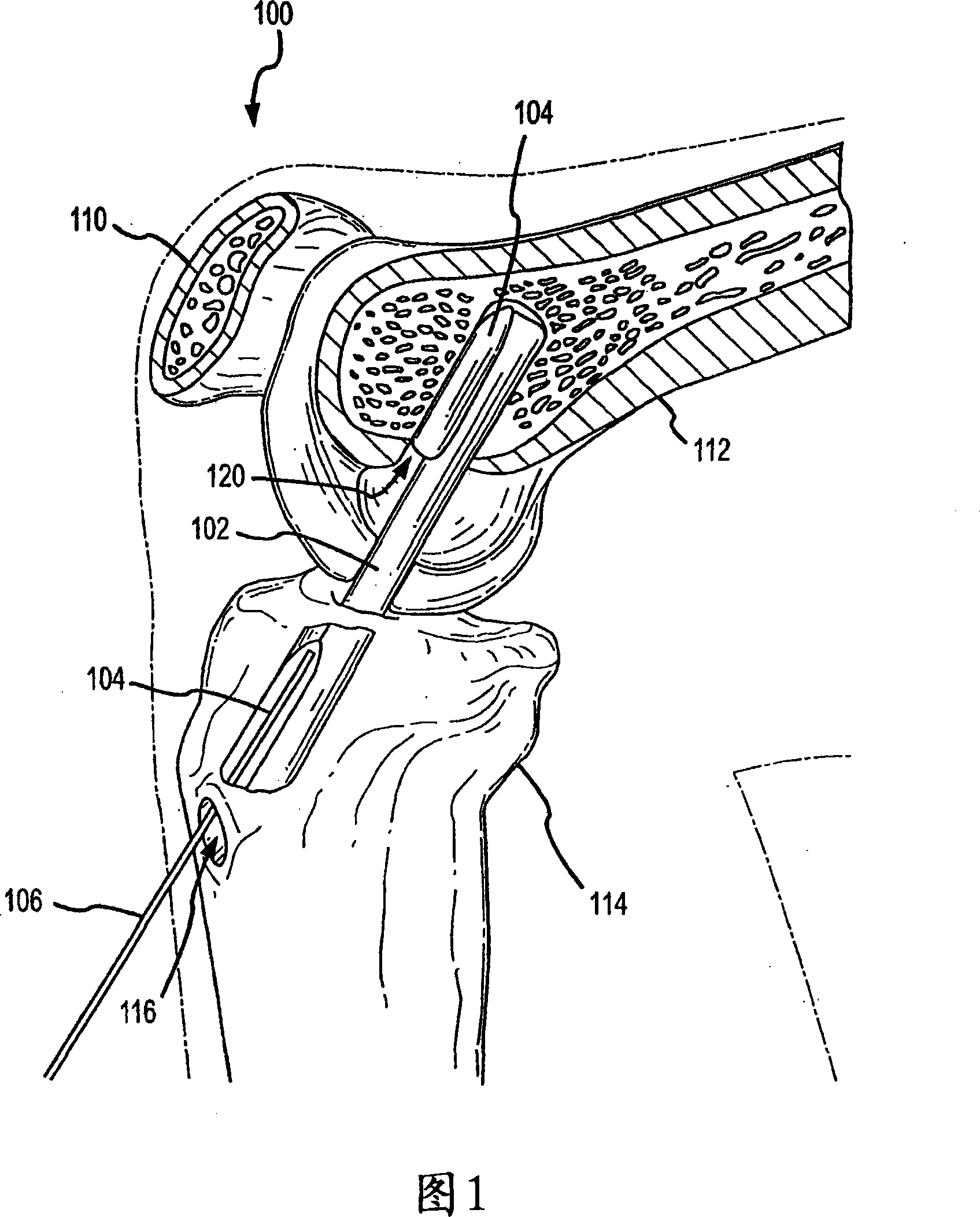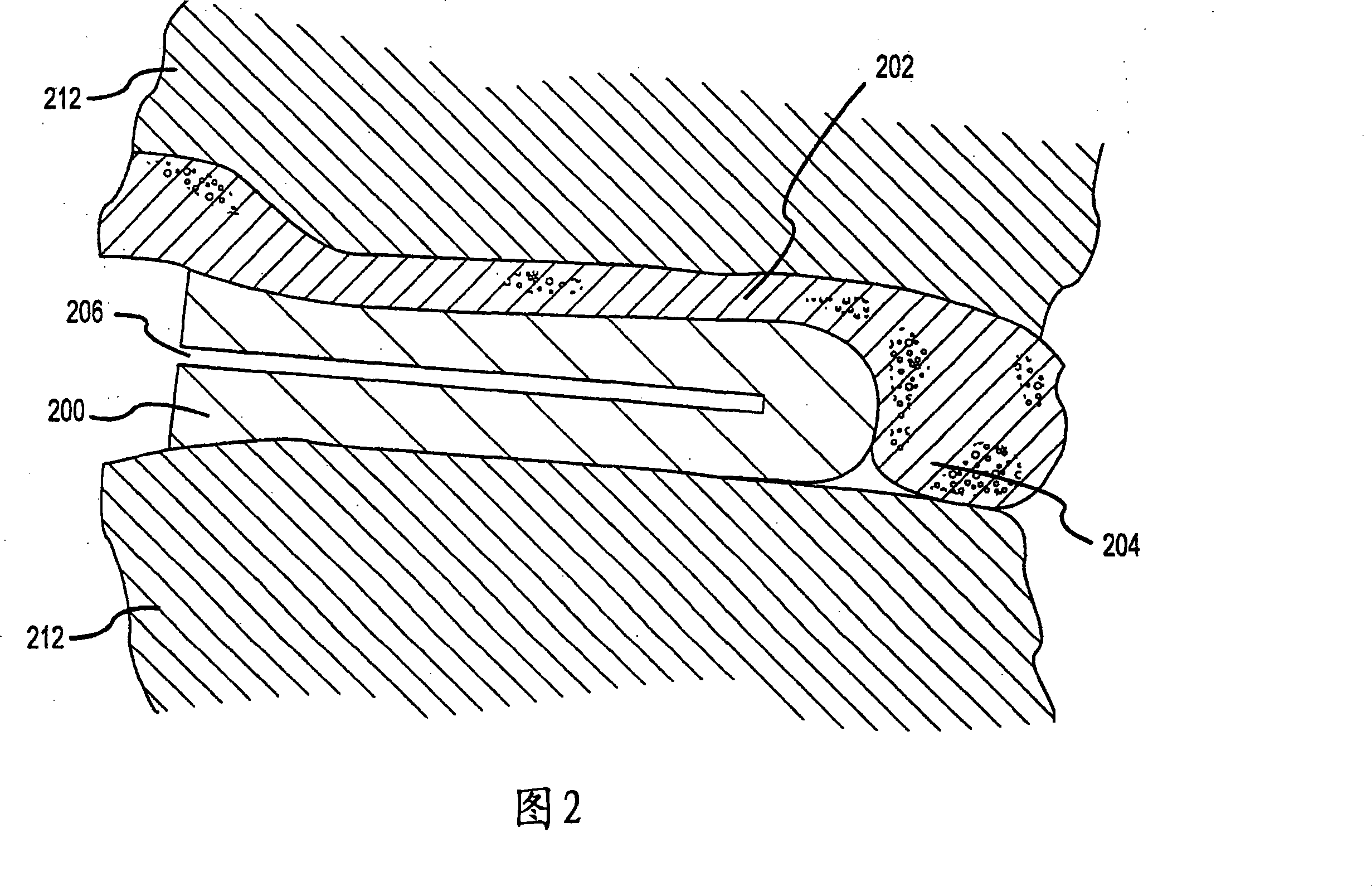A graft fixation device and method
A bone implant and pre-implantation technology, applied in spinal implants, pharmaceutical formulations, drug delivery, etc., can solve problems such as the complexity of popliteal tendon fixation technology
- Summary
- Abstract
- Description
- Claims
- Application Information
AI Technical Summary
Problems solved by technology
Method used
Image
Examples
example 1
[0158] Example 1. SMP production
[0159] tert-butyl acrylate (tBA) monomer (Aldrich), poly(ethylene glycol) dimethacrylate (PEGDMA) crosslinker (Aldrich), and photoinitiator 2,2-dimethoxy-2-benzene Acetophenone (Aldrich) was used as obtained without further purification. A polymer solution was prepared by combining 10 wt% PEGDMA, .1 wt% initiator, and the balance tBA. Other crosslinker / monomer ratios are contemplated, and the crosslinker can be used in the range of 1 wt% to 99 wt%. Other photoinitiators include acetophenone, anisoin, anthraquinone, benzene chromium tricarbonyl, benzil, benzoin, benzoin ethyl ether, benzoin isobutyl ether, benzoin iso Methyl ether, benzophenone, 4-benzoyldiphenyl, 2-benzyl-2-(dimethylamino)-4′-morpholinobutyrophenone, 4,4′-bis(diethyl Amino)-4'-benzophenone, 4,4'-bis(dimethylamino)-4'benzophenone, camphorquinone, 2-chlorothioxanth-9-one, dibenzocycloheptatriene Ketone, 2,2-diethoxyacetophenone, 4,4'dihydroxybenzophenone, 4-(dimethylamino...
example 2
[0163] Example 2. SMP thermomechanical characteristics
[0164] The polymer samples were examined using a Perkin Elmer Dynamic Mechanical Analyzer (DMA-7). A three-point bending configuration was used for glass transition (Tg), strain recovery, and stress recovery tests (FIG. 24 inset). Three-point flexural loading allows reasonable stress / strain levels for samples across the temperature range from the glass to the rubber state. Specifically, this configuration allowed for a maximum bending strain of 30% over a span of 5 mm during stress and strain recovery testing. Figure 24 shows a comparison between PEGDMA copolymer and PLA, a biodegradable polymer used in tibial devices. The decrease in storage modulus with increasing temperature indicates that the material can transition from a glassy or rigid state to a rubbery state. Alternatively, Tg can be determined relative to the peak of the tan delta curve.
[0165] The glass storage modulus is an indicator of the hardness o...
example 3
[0167] Example 3. Plunger Production
[0168]Test plunger materials were machined with ratios of 45 wt% PEGDMA to 55% PMMA (polymethyl methacrylate) with 0.1% photoinitiator and mixed in 14 mm diameter glass test tubes. The open end of the test tube was closed with a rubber stopper, and the test tube and solution were placed in a water bath at 0° C. under a UV lamp for 10 minutes. The glass test tube was then removed, leaving a 14 mm cylinder of PEGPMMA with a glass transition temperature (Tg) of 40°C. The plungers were machined with a cylindrical batch machine using coconut oil as lubricant and a shaft speed of 450 RPM to a diameter of approximately 11.5 mm and a length of 25.4 mm. The edges of the device were trimmed to a radius of 0.5 mm to ensure that the device did not shear the soft tissue (tendon) it contacted.
[0169] In addition, various unconstrained (undeformed) shapes were formed in order to demonstrate the variety of possible unconstrained shapes, see FIG. 7 ...
PUM
 Login to View More
Login to View More Abstract
Description
Claims
Application Information
 Login to View More
Login to View More - R&D
- Intellectual Property
- Life Sciences
- Materials
- Tech Scout
- Unparalleled Data Quality
- Higher Quality Content
- 60% Fewer Hallucinations
Browse by: Latest US Patents, China's latest patents, Technical Efficacy Thesaurus, Application Domain, Technology Topic, Popular Technical Reports.
© 2025 PatSnap. All rights reserved.Legal|Privacy policy|Modern Slavery Act Transparency Statement|Sitemap|About US| Contact US: help@patsnap.com



